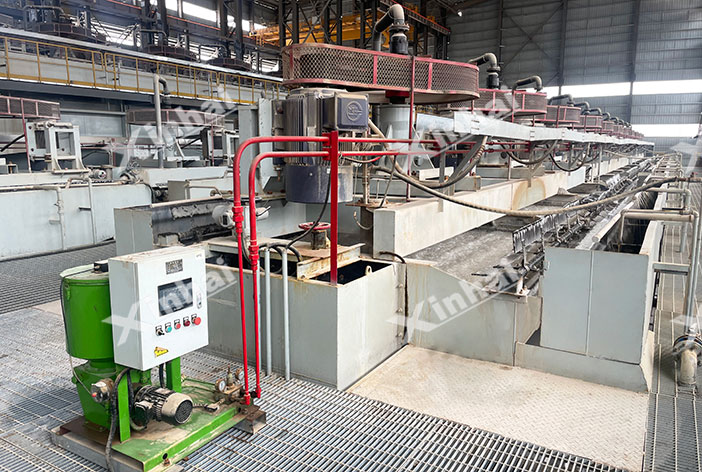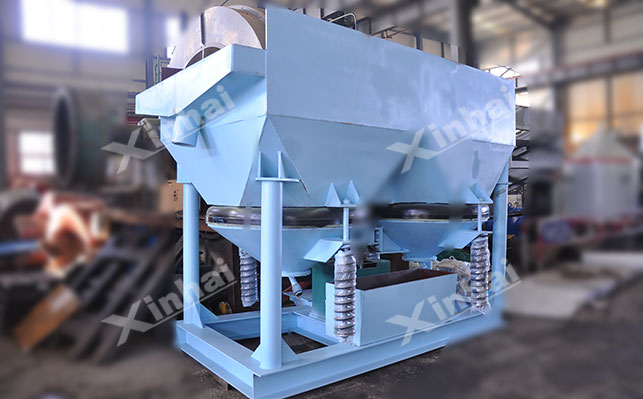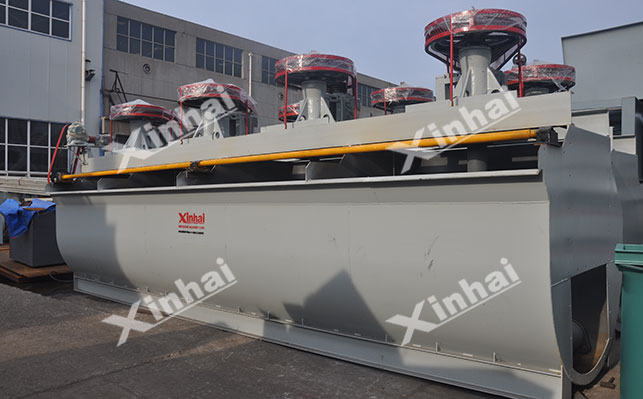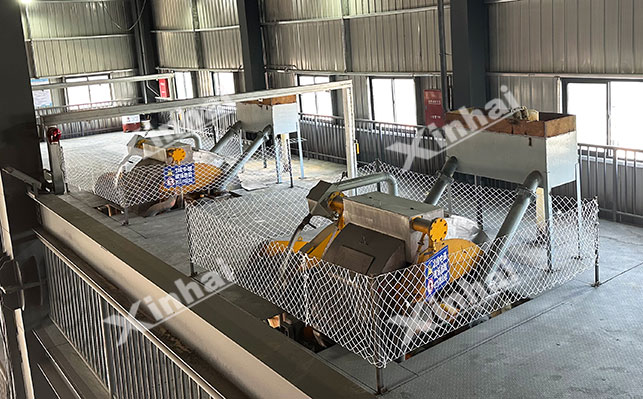
The types of tin ore mainly include cassiterite, sulfide tin ore and skarn tin ore. Among them, sulfide tin ore contains a high sulfur element and often coexists with a variety of sulfide minerals. Generally, the beneficiation of tin ore is determined according to the type and characteristics of the ore.
Tin ore gravity separation process, tin ore flotation process, tin ore magnetic separation process

15311826613
Click to add WeChat
Currently, the vast majority of tin concentrates are produced from cassiterite deposits, and the density of cassiterite is greater than that of associated minerals. Therefore, gravity separation has become one of the main beneficiation processes for tin ore, and is often used to select placer tin ore. Gravity separation is based on the difference in density between tin ore and associated minerals to achieve separation. Cassiterite (SnO₂) has a relatively high density, generally 6.8-7.1g/cm³, while common gangue minerals such as quartz and feldspar have relatively low densities. In the gravity separation equipment, the minerals are layered according to density through the action of water flow, centrifugal force, etc. The tin minerals with high density settle quickly and are enriched in the lower layer; the gangue minerals with low density settle slowly and are discharged in the upper layer or with the water flow.
Cassiterite gravity is generally ore sand separation, and generally adopts a multi-stage grinding and multi-stage separation process, which can achieve the principle of early dissociation, early recovery, and early tailing, and avoid over-crushing caused by unevenly embedded cassiterite.
Since cassiterite will produce slime during the crushing and grinding stage, graded desliming is an important preparatory operation before cassiterite reselection. It can remove the interference of slime and control the particle size of the selected particles. Generally, ore washers, cross-flow belt chutes, small-diameter cyclones and other equipment are used as cassiterite desliming equipment.

The flotation method uses the difference in the physical and chemical properties of the mineral surface. By adding flotation agents, the surface of the tin mineral is hydrophobic, and it can attach to the bubbles and float to the surface of the pulp, while the surface of the gangue mineral is hydrophilic and remains in the pulp, thereby achieving separation. For tin ore, commonly used collectors include xanthate and black medicine, etc., adjusters include sodium carbonate, sodium hydroxide, etc., and foaming agents include pine oil, etc.
The flotation method is suitable for processing tin ores with fine and micro-grained tin ores, as well as tin ores coexisting with sulfide minerals. When the tin ore contains sulfide minerals such as pyrite and chalcopyrite, the sulfide minerals can be recovered by flotation first, and then the tailings can be flotated for tin minerals. During the flotation process, according to the specific properties of the tin ore, the type, dosage and addition order of the flotation reagents, as well as the pH value, temperature and other conditions of the pulp are accurately adjusted to improve the flotation recovery rate and concentrate grade of the tin minerals.

Since some tin ores often contain various iron oxide minerals (such as magnetite, hematite and limonite, etc.), tungsten ore and other paragenetic minerals, these minerals cannot be well separated from cassiterite by flotation and gravity separation. Therefore, magnetic separation is often used in the ore washing process to achieve tin-iron separation. The magnetic separation of tin ore is mainly wet high-intensity magnetic separation, which is used for raw ore, sub-concentrate and concentrate before entering the gravity separation operation, while dry magnetic separation is often used to separate tungsten minerals and tin minerals.